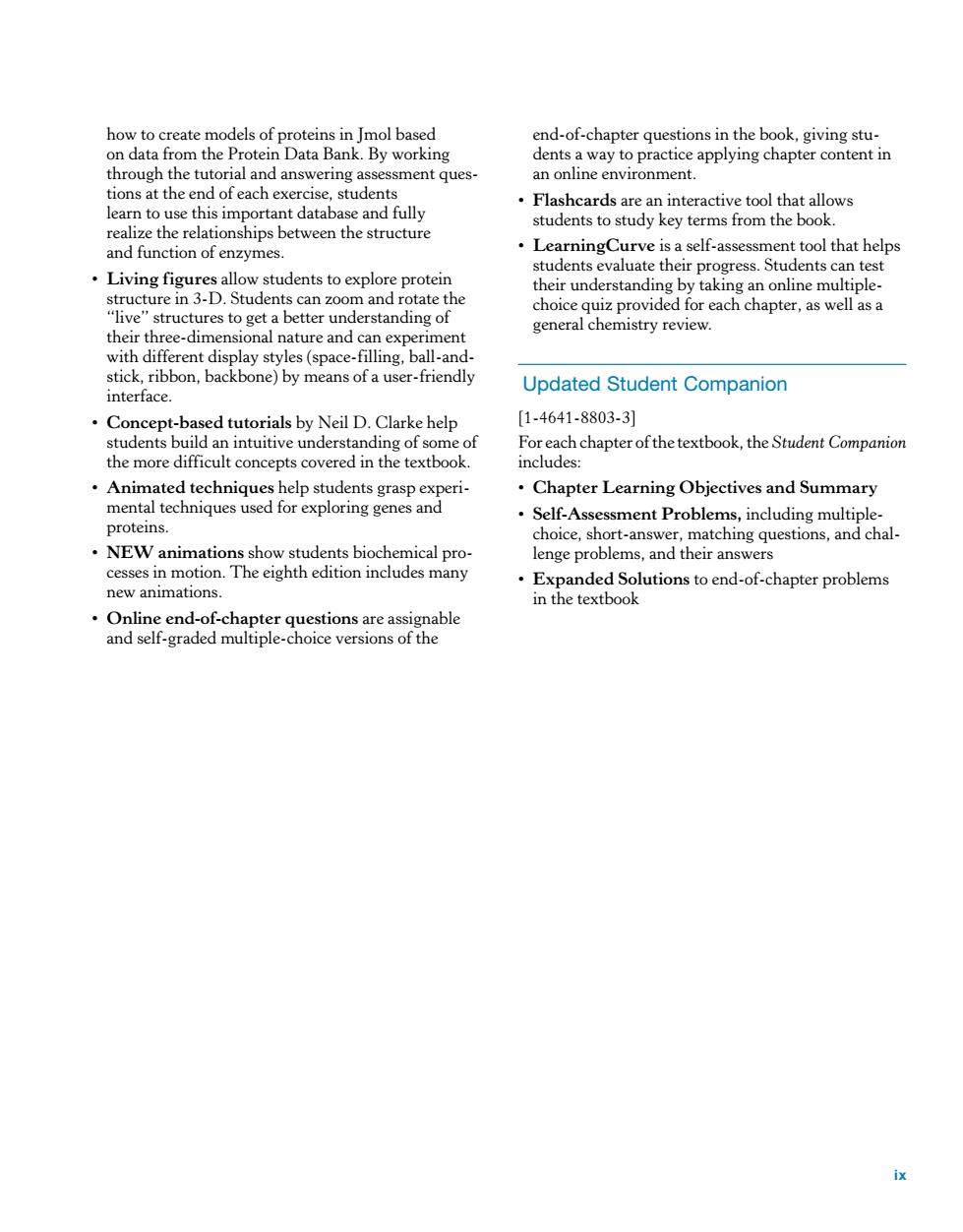正在加载图片...

how to create models of proteins in Jmol based end-of-chapter questions in the book,giving stu- on data from the Protein Data Bank.By working dents a way to practice applying chapter content in an online environment. stude this i Flashcards are an interactive tool that allows eaTtoue students to study key terms from the book. and function of enzymes LearningCurve is a self-asse ts Living figures allow students to explore protein thei derstan structure in 3-D scanm and rotate th erstanding of mapa the with different display style stick,ribbon,backbone)by means of a user-friendly interface. Updated Student Companion orials by Neil D.Clarke help [1-4641-8803-31 aiti For each chapter of the textbook,the Student Companior cove includes: Chapter Learning Objectives and Summary me ment Probler including multiple proteins choice.short-answer.matching questions,and chal- NEW animations show students biochemical pro- lenge problems,and their answers cesses in motion.The eighth edition includes many ded Solutions to end-of-chapter problems new animations Online end-of-ch stions are assignable ndf-raded ixix how to create models of proteins in Jmol based on data from the Protein Data Bank. By working through the tutorial and answering assessment questions at the end of each exercise, students learn to use this important database and fully realize the relationships between the structure and function of enzymes. • Living figures allow students to explore protein structure in 3-D. Students can zoom and rotate the “live” structures to get a better understanding of their three-dimensional nature and can experiment with different display styles (space-filling, ball-andstick, ribbon, backbone) by means of a user-friendly interface. • Concept-based tutorials by Neil D. Clarke help students build an intuitive understanding of some of the more difficult concepts covered in the textbook. • Animated techniques help students grasp experimental techniques used for exploring genes and proteins. • NEW animations show students biochemical processes in motion. The eighth edition includes many new animations. • Online end-of-chapter questions are assignable and self-graded multiple-choice versions of the end-of-chapter questions in the book, giving students a way to practice applying chapter content in an online environment. • Flashcards are an interactive tool that allows students to study key terms from the book. • LearningCurve is a self-assessment tool that helps students evaluate their progress. Students can test their understanding by taking an online multiplechoice quiz provided for each chapter, as well as a general chemistry review. Updated Student Companion [1-4641-8803-3] For each chapter of the textbook, the Student Companion includes: • Chapter Learning Objectives and Summary • Self-Assessment Problems, including multiplechoice, short-answer, matching questions, and challenge problems, and their answers • Expanded Solutions to end-of-chapter problems in the textbook